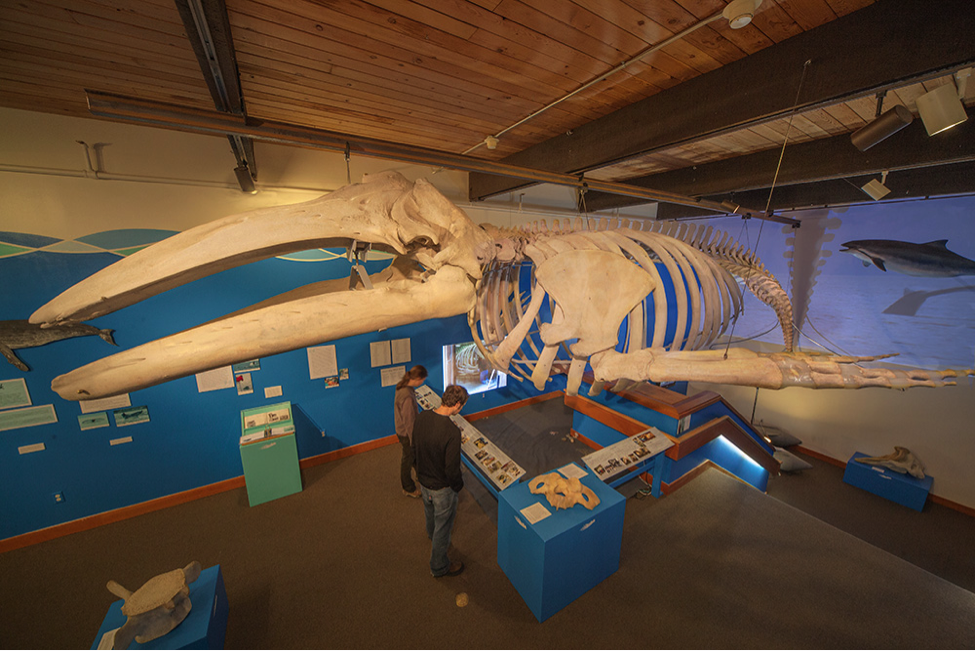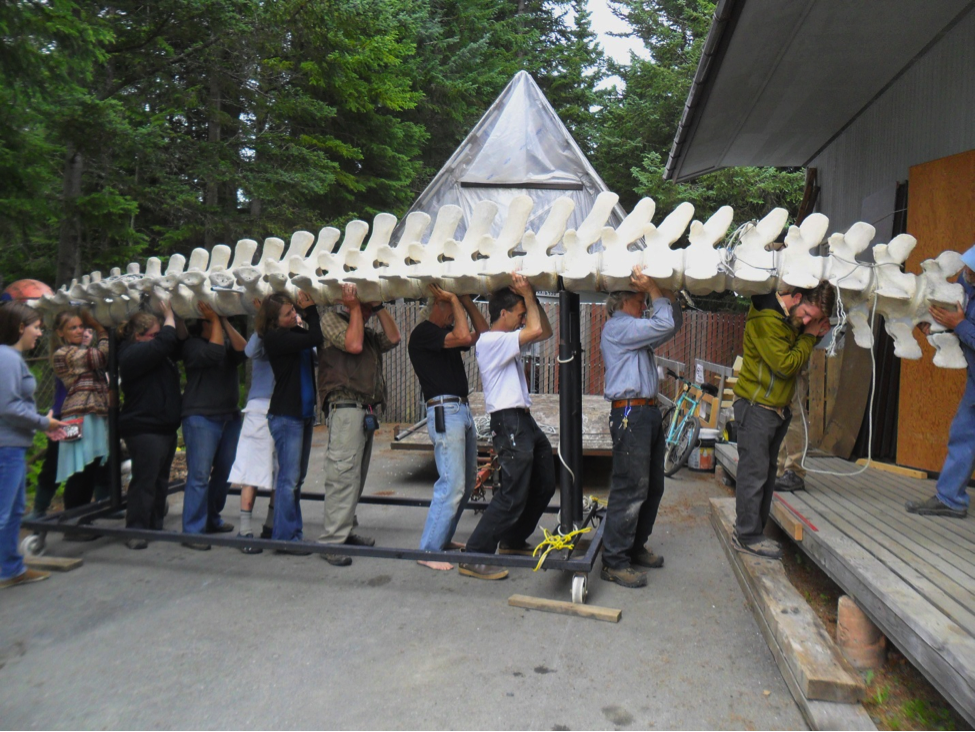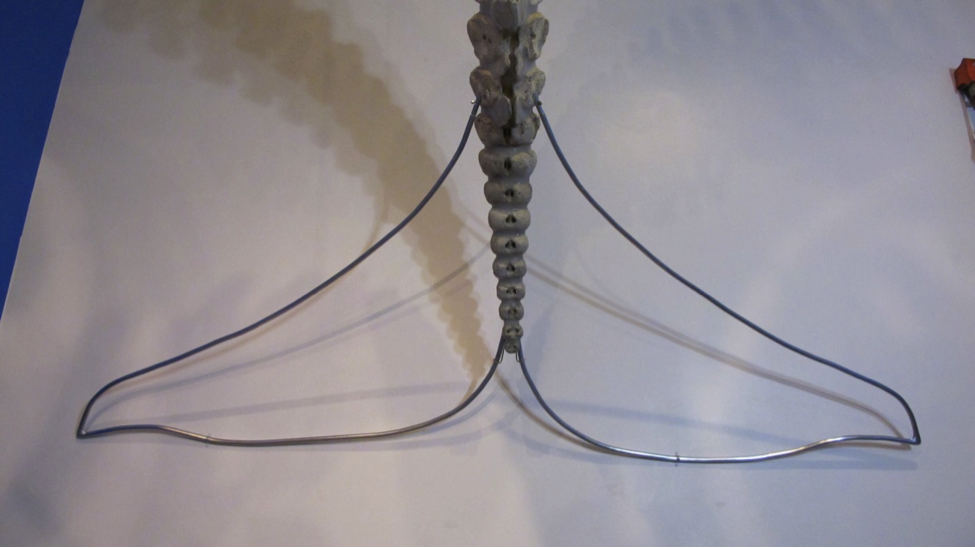By Diane Converse
The Pratt Museum is a small museum located in Homer, Alaska at the “end of the road.” There is a thriving arts community, fishermen are based here, and Alaskans from other parts of the State sometimes choose to retire here as the climate is relatively mild. People visit in the summer to enjoy the beautiful scenery, visit the art galleries, to fish, and to enjoy the many outdoor recreational opportunities on the Kenai Peninsula. The Pratt is a general museum telling the cultural, natural history and artistic stories of this region, and is known for its blend of art and science throughout the galleries.
We just closed a six-month run of one of our most popular exhibits ever called Encounters: Whales in Our Waters. The centerpiece of this exhibit was the 38-foot skeleton of a juvenile male gray whale. The Pratt’s entire facility is 10,500 square feet and the gallery we were stuffing this 1,700 pound critter into is about 800 square feet. Those who have been here know that the access to this gallery involves stairs, ramps, and tight corners. So how did we get this monster in there?
The answer is community. This was a massive project, on and off, over 14 years, involving people of all ages with diverse backgrounds and interests. It began when a gray whale was collected by museum volunteers in 1999. Beyond the gray whale, the exhibition included quotes from Native people about the importance of whales in their lives and current research highlights from local scientists. Artists took a break from their creative projects and helped us paint the gallery walls blue (and later came back to put on three coats to get it white again). People who normally work on fishing boats took time out of their busy schedules to help us hang the skeleton from the ceiling of the gallery. Many other community members helped articulate the bones last summer with the guidance of local expert Lee Post. They moved the pieces in to the gallery during January, carrying pieces of the skeleton across an icy parking lot, around the corners and up the stairs. Many of the same people returned in July to move it out again, minus the ice. We worried that not enough people would come, but sent out the call for help and they came—including a number of volunteers that helped collect the whale back in 1999. Over 100 people are credited as volunteers on the Gray Whale Project.
Doing the impossible takes people—people who will show up and figure it out. There are people who love challenges. If you are working on a tight budget, don’t have a particular type of expertise, or don’t have the right tools, someone in your community does. They would probably like an opportunity to be involved. Ask them. Share leadership, share ownership. Let go. Be a facilitator. Yes, this can be difficult for perfectionist control freaks! Create a place where creative synergy can flourish. Have a plan but be prepared to make room for those special things that will pop up during the project. For example, the idea for outlining the gray whale’s tail fluke came from one of the volunteers, and many visitors remarked on how it made a conglomeration of bones all the more “whale-like.”
I am fortunate to have an amazing staff; Scott Bartlett, the Curator of Exhibits has been referred to as a “volunteer magnet.” One of his talents is the ability to facilitate instead of control. Staff members in small museums have to wear many hats and be willing to dive into whatever needs doing. They also need to be able to step away at times. One of the best things I can do as the Director is to try to get my staff what they need and then get out of their way. Again, this is not always easy!
Encounters was enjoyed by area residents, regional school groups, and summer travelers. Over the course of the exhibit this year, locals would come in with their visiting family members and point out the section of whale they worked on. There is great pride in ownership of this whale among many people. We are all looking forward to seeing it up again as a permanent part of the exhibits in our new building in a few years.
In one of the staff meetings early on during my tenure here at the Pratt we discussed both acquiring several pieces of fine art and how we were going to get just the right tasty bits of fish guts to feed the octopus in our aquaria—not two topics you normally hear together. That was one of those times when it struck me how special this place is. Small museums certainly have their challenges but there is also a lot of creative joy in figuring out how to make amazing things, like the whale exhibit, happen. Our diverse community makes all the difference.
Diane Converse has been the Museum Director/CEO of the Pratt since the fall of 2009. She moved to Alaska from the Seattle area where she worked in several nonprofits with educational missions over 20 years. She has undergraduate degrees in wildlife science and visual communication as well as a Masters Degree in Nonprofit Leadership and a Doctor of Education in Educational Leadership. Her life-long personal interests in art and science and a passion for education have found a home at the Pratt where being a generalist is a good thing!











Comments
A great account of an extraordinary exhibition!
Add new comment